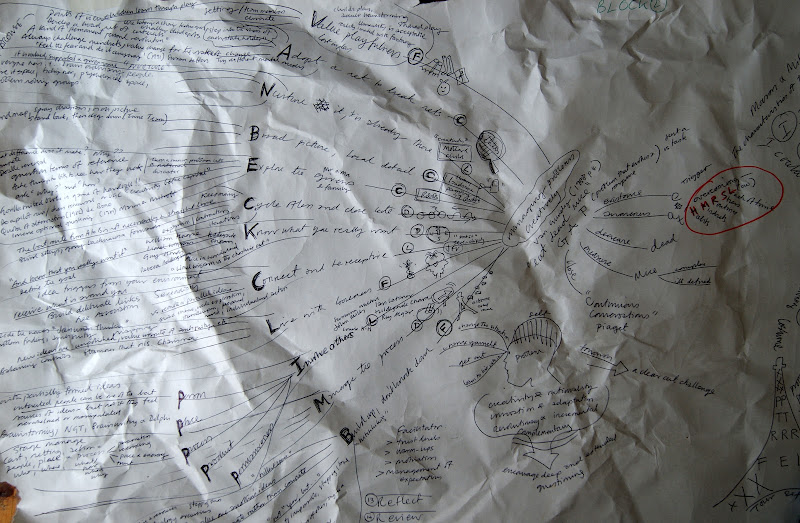B822 BK 2 C6 Precepts
Especially actions that DISCOURAGE speculation/creativity Henry (2010:93)
|
Curiosity
|
Charles Handy (1991) Creativity in Mangement, Radio 1, B822
|
|
Forgiveness
|
Charles Handy (1991)
|
|
Love
|
Charles Handy (1991)
|
|
A sense of direction
|
Schon, D.A. (1983) The Reflective Practioner
|
Some ‘Set Breakers’ Henry (2010:96)
1. Develop broad background experience and many interests
2. Find and challenge your own blind spots
3. Explore many different perspectives
4. Challenge yourself
5. Develop good browsing facilities
6. Change techniques or different mental modes
7. Seek out people with other points of view
8. In a group
Relevance bias
1. Dry Run
2. Quota of alternatives
3. Inverse optional question
4. Checklist of transformations
5. Reverse the problem
6. Boundary relaxation
7. What difference?
8. Get several people to try it
9. Deep questioning
10. Challenge
11. Fresh eye
6.4 Value of Play
1. Play is key to learning activity
2. The objects of play are both objective and subjective
3. The ability of play helps create the sense of independence.
4. Play offers a protected area of illusion
5. Plays is a way of managing unfulfilled need.
6. Play can lead to a particular state of mind.
7. Play breaks down outside certain emotional limits.
8. Shared play builds relationships
A. Choice of Setting
B. Choice of team members
C. Climate to aim for
D. Don’t demystify
E. Management of coping mechanisms
F. An aid to team building
McCaskey (1988)
· Problem finding (experience)
· Map building
· Janusian Thinking
· Controlling and not controlling
· Using domain and direction
· Planning rather than goal-directed planning
· Humour that oils
· Charisma
· Using ad hoc structures such as task force and project teams
· Using a core group embedded in a network of contracts and information
· ‘Turbulence management’
N.B. Creativity needs space vs. time pressure, interruption
· Create Space
6.8 involve others
The more participants you have, the more ideas you get.
‘Successfully creative people are often deeply committed to a particular domain, that has strong internal significance to them, and they focus very firmly on particular goals’. (e.g. Tessa Ross, Lionel Wigram, William Hague)
'Passion and persistence can motivate sustained work; attract the loyalty of helpers; create awareness of you and your project in people who have relevant resources; and reassure those who need to take risks on your behalf.’ Henry (2010:114)
CATWOE p115
- Blind chance
- Wide-ranging exploration
- The prepared mind
- Individualised Action
6.12 Manage the Process Henry (2010:1113)
· Get the parameters right
· Record
· Sustain pace and energy
· Develop trust
· Keep the experience positive
· Plan
· Do – analyse either side and separately
· What?
· Why?
Learn from experience of others
REFERENCE
Adams, J.L. (1987) Chase, Chance and Creativity: The Lucky Art of Novelty; New York; Columbia University Press.
Austin, J.H. (1978) Chase, Chance and Creativity: The Lucky Art of Novelty: New York: Columbia University Press.
McCaskey, M.B. (1988) ‘The challenge of managing ambiguity’, in Pondy, L.R, Boland, R.J and Thomas, H (eds) Managing Ambiguity and Change, new York, pp 2-11
Schon, A.A. (1983) The Reflective Practioner: How Professionals think in Action, London: Temple Smith
Wetherall, A. and Nunamaker, J (1999) Getting Results from Electronic Meetings
Winnicott, D.W (1972) Playing and Reality. Harmondsworth (1983) Davis, M and Wallbridge, D (1983) Boundary and Space: An Introduction to the Work of D.W. Winnicott. Harmondsorth.
